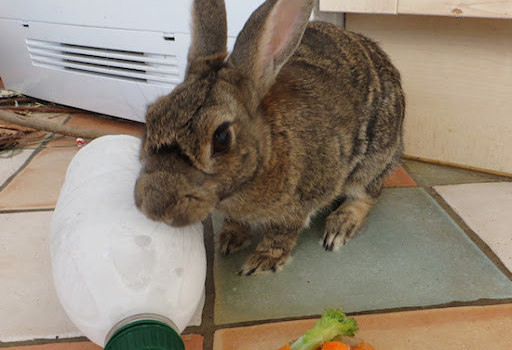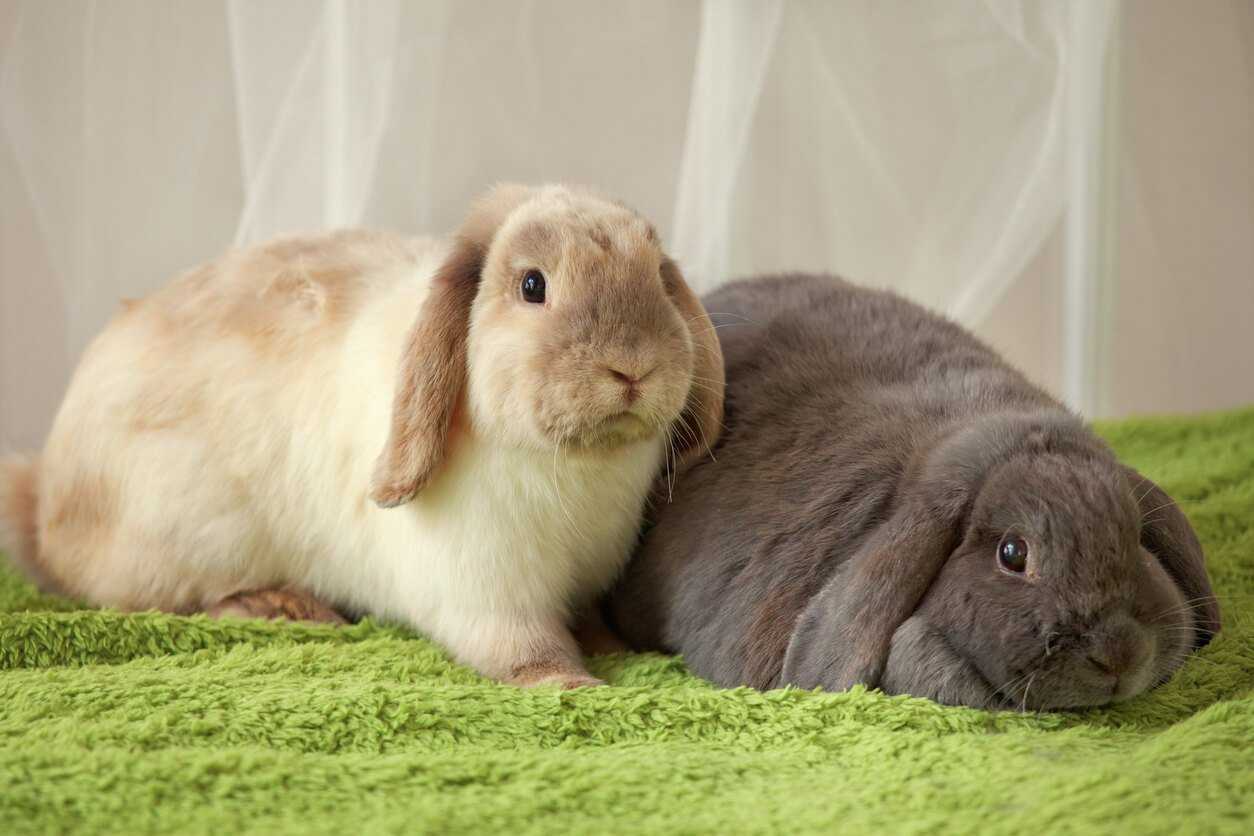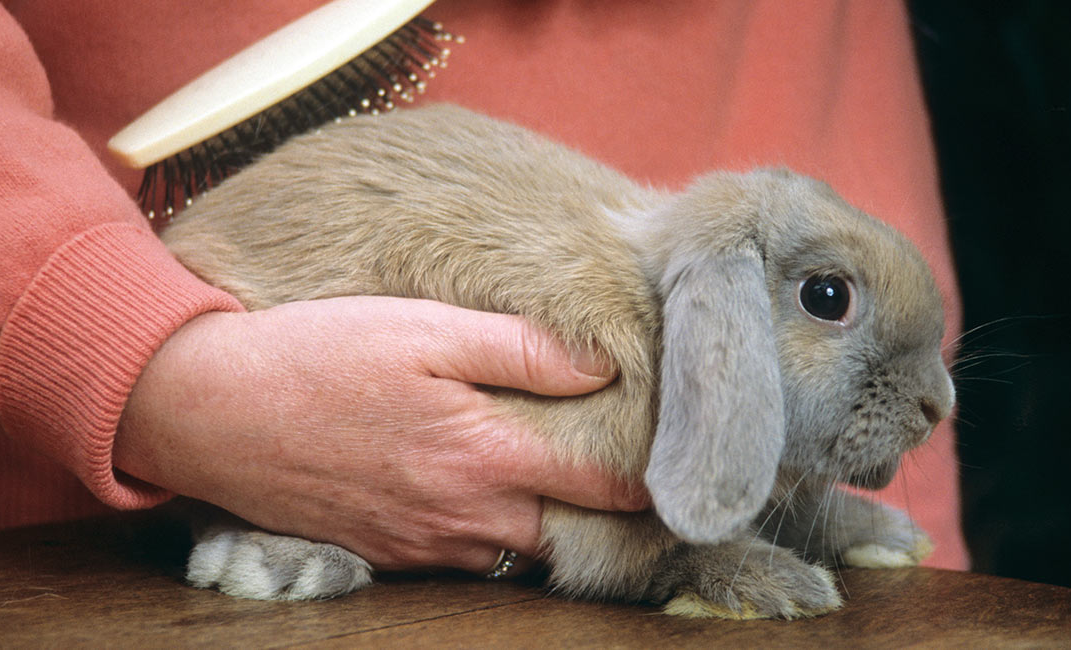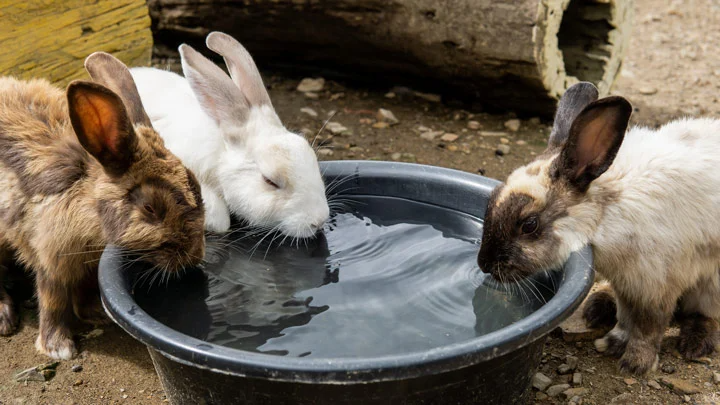Rabbits
Rabbit Heat Stroke
It is very important that pet owners understand how heat can negatively affect pet rabbits.
Being extra vigilant and educating yourself on the signs of heatstroke can help keep your rabbit safe and possibly even save its life.
What is Heat Stroke?
Heat stroke is a serious health condition where a rabbit’s body temperature over heats. This is caused by extended exposure to high temperatures.
Rabbits are especially prone to heat stroke because they have very limited ways to get rid of body heat. They are unable to sweat like a human or pant like a dog. The main way a bunny can lose body heat is through their ears.
Heat stroke is more common in summer time. A rabbit is susceptible to heat stroke when the temperature in their enclosure is above 25 degrees Celcius.
Australian rabbit owners need to be particularly careful with their bunnies. The Australian summer can be especially hot and regularly reach over 35 degrees Celcius which will put your pet rabbit at risk.
The chance of heat stroke is increased if a rabbit is sitting in direct sunlight or has long fur (such as Angoras). Heat stroke is a very serious condition which can prove fatal.
Signs of Heat Stroke in Pet Rabbits
It can be difficult to spot the symptoms of heat stroke in your pet rabbits. They will hide early signs that they feel unwell and may not start to show obvious symptoms until they are already in the advanced stages of heat stroke.

Signs of Rabbit Heat Stroke
A wet nose, tiredness, red ears, confusion and drooling are some of the main signs to look for.
It is important to check your rabbit for symptoms regularly in warmer weather. Pay attention to their breathing, behaviour and ears. Physical signs include:
- Taking short breaths or difficulty breathing
- Confusion and odd behaviours
- Red ears that feel hot to touch
- Weakness and lethargy
- Wet nose
- Drooling
- Convulsing
In extreme cases, heat stroke may lead to death.
Keeping your Pet Rabbit Cool
Wild rabbits tunnel underground to get away from the sun. However, domestic rabbits are unable to do this on warm days.
This means it becomes your responsibility, as a rabbit owner, to provide your bunny with other ways to cool down. Prevention is the best cure for heat stroke. Follow these tips to keep your rabbit’s temperature down and keep them safe.
Shade
Keeping your rabbit out of direct sunlight will help keep it cooler. It is recommended you put its hutch in a shady spot – perhaps under a tree or veranda.
It is a good idea to purchase your rabbit a hutch that has a shaded run or an enclosed sleeping area, where the rabbit can seek shade in a cooler area.
You could also add more shade onto an existing hutch by adding in a tunnel, upside down cardboard box or by placing a damp towel over an open run.
Bring your Rabbit Indoors
If it lives in a hutch outdoors, it is a good idea to keep your rabbit indoors on a warm day. Being indoors is much easier to provide a controlled temperature and can help prevent heat stroke.

Housing Rabbits Indoors
Have an indoor cage and move it in front of the air conditioning or a fan.
If fan air is blowing directly onto your rabbit, make sure it has a space where it can move away from the air (if it is bothering it).
If you are letting your rabbit roam free inside your house, make sure it is safe from potential hazards including dogs, other pets, young children, electrical cords and anything it may chew on.
Water
Provide plenty of access to cool, clean and fresh water. If your rabbit is dehydrated, it is more likely to experience heat stroke. If your rabbit is in a large enclosed area, provide multiple water bottles on opposite ends. This way your rabbit doesn’t have to travel too far for a drink.
Change their water regularly to keep it fresh and check their bottle water feeder to make sure it is functioning and hasn’t become clogged. On very hot days, include an ice cube or two in their water bottle to cool it down.
Frozen Bottles
Fill a plastic container or old milk bottle with water and freeze it. You can then put this inside your rabbits hutch to cool down the overall area. Your rabbit may even choose to lay against it for some relief.
Cool Surface
Make sure your rabbit’s enclosure has cool surfaces it can lay on. Place a couple of stone or ceramic tiles on the hutch floor for them to rest against. You could purchase pet cooling mats from pet stores relatively cheap. Make sure if is safe if your rabbit chews on it.
Grooming
Rabbit breeds with thick or long coats (such as Angoras) have more difficulty regulating their body temperature. If this is the case with your bunny, brush it regularly to remove loose fur and trim their coat shorter in the hotter months.

Caring For Your Leghorn Chickens
Brushing your rabbits hair will remove most of the bulk hair from their coats.
Treatment
If you suspect your rabbit may be experiencing any symptoms of heat stroke, you will need to act quickly. It can worsen rapidly so every second counts.
Call your local vet immediately. They will give you advice on what to do next and tell you to come in right away. When arriving at the vets, they will most likely give your rabbit saline fluid to help them recover quickly.
It is a good idea to know which vet you would contact in advance of any emergency situation arising. Know your local vet’s office locations, including after hours emergency vets.
Always cool your rabbit down slowly. Sudden changes in a rabbit’s temperature can put them into shock and make them become even more unwell.
Move your rabbit into a cool place. Ideally, this will be indoors near air conditioning or a fan. Place it on a cool surface such as tiled flooring. Mist your rabbit lightly with cold water. Let it drink small amounts of cool water.
You could also cover its body with a lightly damp towel and gently rub cool water or ice cubes against the outside of the rabbit’s ears. Don’t rub anything on the inside of its ears.
Never pour water over or submerge your rabbit in water. This may change their temperature too quickly and also stress them out which will only worsen the situation. Even if your have successfully cooled your rabbit down at home, still take it to the vet to be properly treated.
References
How to Identify Heat Stroke in Pet Rabbits
https://www.medivet.co.uk/pet-care/pet-advice/heatstroke-in-rabbits/




